Counting Birds at Christmas
Why it’s easier than you think to include birders with disabilities
(Original version published in February 2023)
Birding: No Longer a Solo Affair
I’ve been itching to do a Christmas Bird Count (CBC) since I first read about it in 2021. The effort combines a love of birds with conservation science—and just enough listing to delight my inner “twitcher.” The idea of joining a team to observe as many species as possible also speaks to a competitive drive I rarely get to express.
But there’s another, more practical reason why birding in a group appeals to me: I have Becker’s muscular dystrophy. This means I must rely on a power wheelchair and the assistance of caregivers to navigate the world. When it comes to birding, this means the idyllic notion of hitting a trail at dawn with a field guide and a pair of binoculars to commune in solitude with birds is little more than a fantasy. I can neither hold binoculars nor a field guide (nor any physical book, for that matter). As for being alone, that’s a luxury I seldom, if ever, enjoy.
But ironically, birding is one of those few activities that I actually prefer doing with other people. It’s strange to write that sentence because what initially drew me to birds was the therapeutic, self-grounding experience of spending time in nature—a place where all my human concerns could fade, and I would just be. For many of my early bird outings, that’s exactly what I did. I wandered independently, or with a caregiver, using my naked eyes and a couple dozen bird sounds I’d memorized to identify species.
Though I relished these outdoor adventures, I also realized that being unable to wield binoculars was a major impediment. It felt like the critical difference between myself and my nondisabled peers; the root cause of my stagnating birding skills. With the help of another birder with muscular dystrophy, I acquired a modified spotting scope, which signified a gargantuan leap in my birding practice and brought the avian realm into clearer focus. Yet even this technology, revolutionary as it was, carried certain limitations.
With the scope, I could easily get eyes on a water bird, or one perched in a tree, but faster-moving birds, or those flying overhead, remained out of reach. And though the scores of minute adjustments needed to locate and follow each individual bird could now be performed by remote, using my scope could still surprisingly and rapidly drain my stores of energy. Don’t get me wrong: some of my proudest moments, along with a great number of lifers and much of my development as a birder, are owed to my adapted scope. I joyously bird with it whenever I can, but I must be mindful lest I overexert myself.
When I bird in a group, however, I am suddenly liberated from my limitations. I can lean on the abilities of my fellow birders while my own strengths become assets to the team. When I spot a far-off bird, for example, I can point it out to someone with binoculars or a camera, and they can in turn lend visual clues to aid identification. The end result? We all see more birds. But the benefits don’t stop there. Once I know the identity of a mystery bird, I can then match it to the elements I can discern from a distance—like shape, structure, size, posture, behavior, sounds, and habitat—which improves my odds at identifying it on my own in the future.
Round Rock's First Accessible CBC
When Virginia Rose approached me about organizing an accessible CBC in Austin, I quickly volunteered to partake. The only problem was, I hadn’t an inkling of how to get started. Thankfully, Birdability had created a guide to holding partly-accessible CBCs.
As CBC circles already spanned much of North America, the goal was not to launch a series of new disability-friendly CBCs, but for existing CBCs to incorporate accessible locations. Indeed, this seemed the optimal tack. Like any other minority, the disability community strives for equal opportunity and inclusion in mainstream spheres. Restricting people with disabilities to a handful of “special” CBCs would be discriminatory, while expecting disabled people to establish their own CBCs would be an undue burden.
In actuality, collaborating with a Texan CBC to offer an accessible component was quite easy. Virginia was friends with Mikael Behrens, Area 6 leader for the Round Rock CBC. Even more fortuitous, Lake Creek Trail fell under his purview. This three-mile-long greenbelt winds through a suburb of northwest Austin and features many hallmarks of accessibility.
The paved, mostly level path with van-accessible spaces at the trailhead accommodates wheelchair users. Periodic benches allow people with chronic pain, fatigue, or respiratory illnesses to rest along the trail. The lack of noise pollution enables people who are blind or visually impaired to bird by ear.
We’d need to coordinate with Mikael to avoid covering the same sections twice, but otherwise, he embraced our group. We opted on a stationary count from the trailhead and adjacent parking lot as that would welcome the widest array of people—who can’t sit or stand (or pace) for a couple of hours to notice birds? This plan also simplified our integration with the Area 6 team. The usual Lake Creek counters just had to start a tad farther down the trail.
The Round Rock CBC did present one downside, however: Virginia would be out of town on the appointed day. I felt confident I could spot and identify many species, but I insisted our crew needed at least one expert birder. Between my lack of expertise and my inability to hold binoculars, I could imagine scores of sounds and silhouettes going unidentified. Virginia emailed a few dozen local birders. To my relief, Celeste Treadway and John Bloomfield answered our call.
Birding on New Year’s Eve
I arrived at 8 AM that morning, surprised to see seven birders already gathered around the trailhead. We’d number 11 in all—a mix of seasoned and beginning birders, with and without disabilities, ages 13 and up. I emerged from the van to the familiar chips of Yellow-rumped Warblers, the angry jeers of Blue Jays, the shrill whistles of Cedar Waxwings.
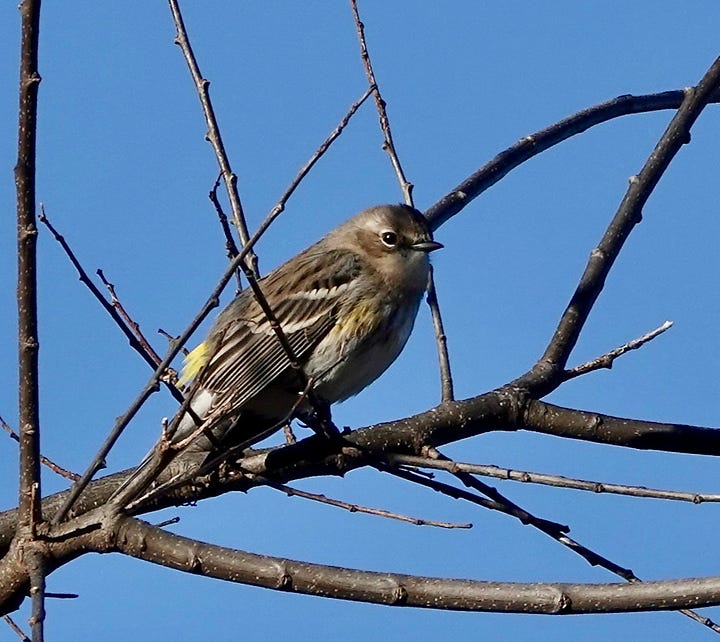
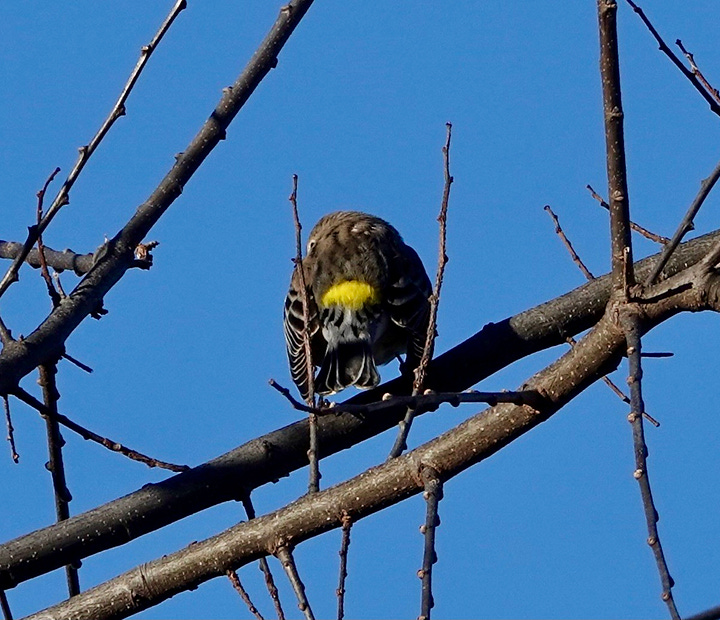
I had never birded Lake Creek this late in the year, so the leafless trees were new: dreary yet advantageous as the birds would be easier to locate. It was at most 50 degrees, but the sun was crisp and bright. We’d take “sun breaks” throughout our count, fleeing shadows for the warmth of the parking lot.
We exchanged names, then swiftly set about finding and identifying birds. Flocks of American Robins and White-winged Doves swirled overhead. A tangle of vines and bare-limbed trees offered views of a Lincoln’s Sparrow. A Northern Mockingbird stood alert on a power pole.
We wandered to the far end of the parking lot, where a huge black shape caught our attention. We hoped for an owl, but instead, we discovered a Turkey Vulture. Impressive, and ominous, but owl—it was not.
Celeste announced a large raptor flying in behind some trees to our southwest. I turned in time to watch it disappear, but even that passing glance was enough to note that it was as large, if not bigger, than our Turkey Vulture. It was a massive, black bird soaring on perfectly flat wings.
“I think that’s a Bald Eagle!” she exclaimed, though a bit uncertainly. A suburban neighborhood with a skinny little creek seemed a strange place for an eagle. But it couldn't be a vulture. Its whitish head and hefty bill projected well beyond the leading edge of its wings. Crested Caracara was a safer bet.
We returned to tallying: six Northern Cardinals, three Carolina Chickadees, two Lesser Goldfinches. A pair of Ruby-crowned Kinglets scolded us from a nearby thicket. A Red-shouldered Hawk shrieked in the distance.
Other, less common calls drew us closer to the woods. A series of high-pitched tsee notes erupted from the trees; then a tiny bird, lit yellow by the sun, flitted past our heads. Golden-crowned Kinglet! We puzzled over a piercing cry that might have belonged to a hawk, or maybe a woodpecker. KYEER… KYEER…
“Northern Flicker?” I guessed. We traced it to the forest edge, but no luck.
Celeste’s 13-year-old grandkid Archer gestured toward the cedar tree before us. “It’s in here.” But that can’t be right, I thought. It’s farther away than that.
“Where?”
“I saw a bird in this tree.” Finally, I noticed a small shape darting about the undergrowth. Even then, I underestimated it, assuming it to be a warbler or a wren we’d already logged.
The bird hopped out onto a bare branch, mere feet away from us. It was a plump creature with an upright posture, brownish above with dark, smudgy spots against a pale breast below. It was a Hermit Thrush and my first lifer of the day! The group echoed my excitement, and I thanked Archer for the excellent spot.
By 10 AM, we’d recorded most of the expected species. Celeste was still hunting around the parking lot. A contingent had gone to explore the trail. I sat near the trailhead resting when I glimpsed a pair of dark-headed gulls flapping westward. I immediately notified John, so he could get on them with binoculars. They were on the small side of medium, white overall with black limited to the wing tips and heads. “Franklin’s,” said John, landing them in the rare category.
If there was one thing I did not anticipate doing on our CBC, it was filling out a rare bird form! We proceeded to eliminate the other likely suspects. Laughing would have more extensive black on the underwings. Bonaparte’s would have been smaller, with only a dark ear patch. Anything else would have been extremely unusual.
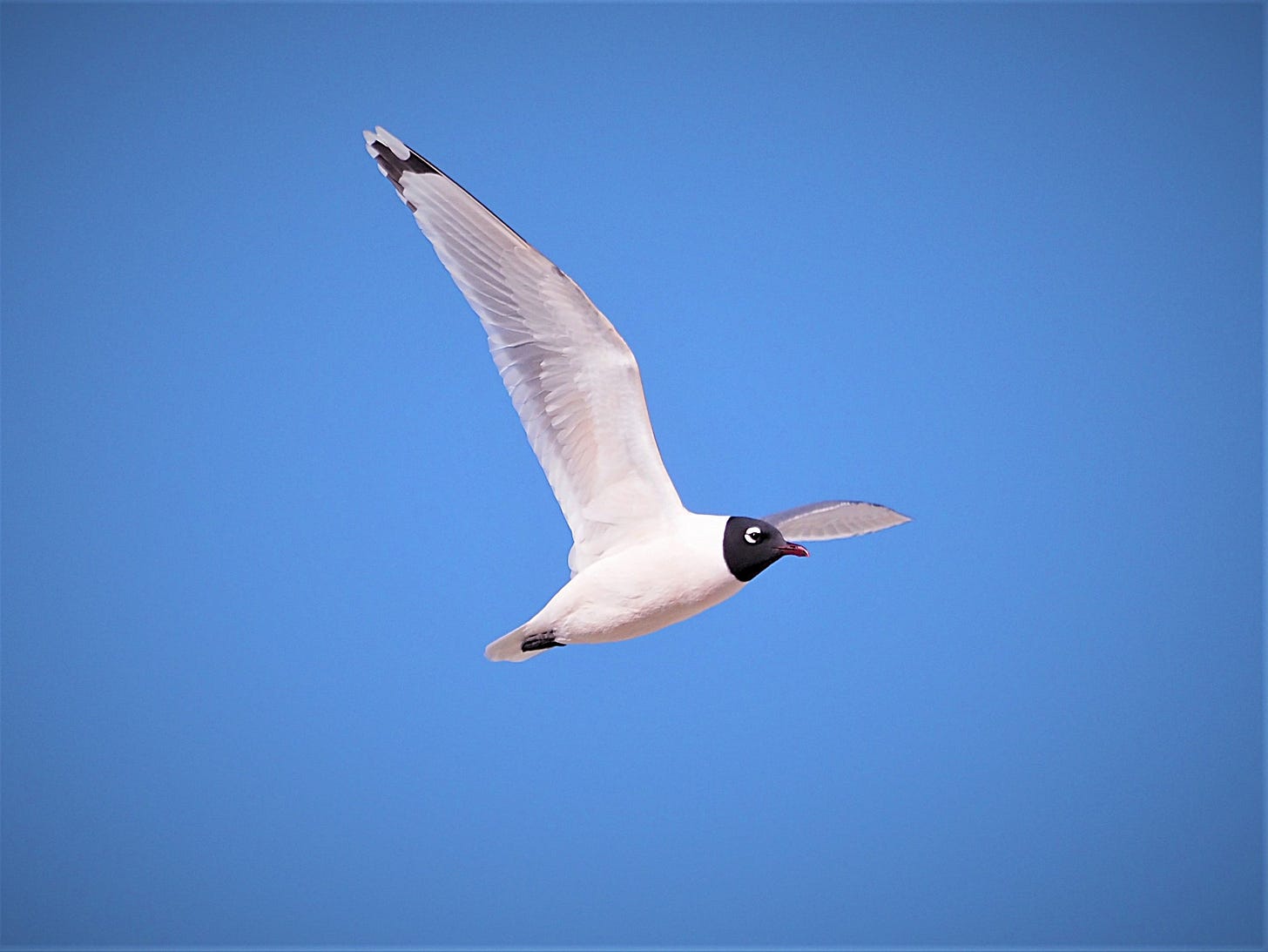
We could have happily ended the day there, but more surprises lay in store. A fellow birder emerged from the trail to share photos of a magnificent Bald Eagle he’d seen not soon after our supposed caracara. We realized that Celeste had spotted a Bald Eagle. She shook her head, chuckling: “I can’t believe I talked myself out of it!”
As the temperature rose, a kettle of Black Vultures lifted off on a thermal. We took note of the vultures and moved on, but my caregiver Belincia lingered.
“I think there’s a hawk circling with them.”
She was right, and soon the sun revealed its identity. “Red-tailed Hawk,” I confirmed. “Nice spot!” I was genuinely impressed. This was Belincia’s first time birding, and already she was exhibiting the close attention it requires.
“That reminds me of one of Jeff Patterson’s mottos, ‘Look and listen—longer,’” said Celeste.
Then, our mystery bird began to call again. I grabbed my phone and hit record on Merlin’s Sound ID. The app clocked a Northern Flicker, making it lifer number two! The bird swept over us, flashing its yellow underwings and tail. It perched in the upper reaches of a tree, allowing Celeste to capture a few distant photos, which further bolstered our ID.
By the end, we’d observed 27 species and Area 6’s one and only rare bird. I was dog-tired yet thrilled by the results of our effort. We showed that birders with disabilities could not only do a CBC but be a major asset to a birding team!
Enjoy the birds,
Eric

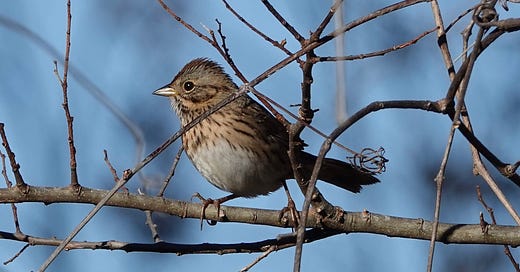


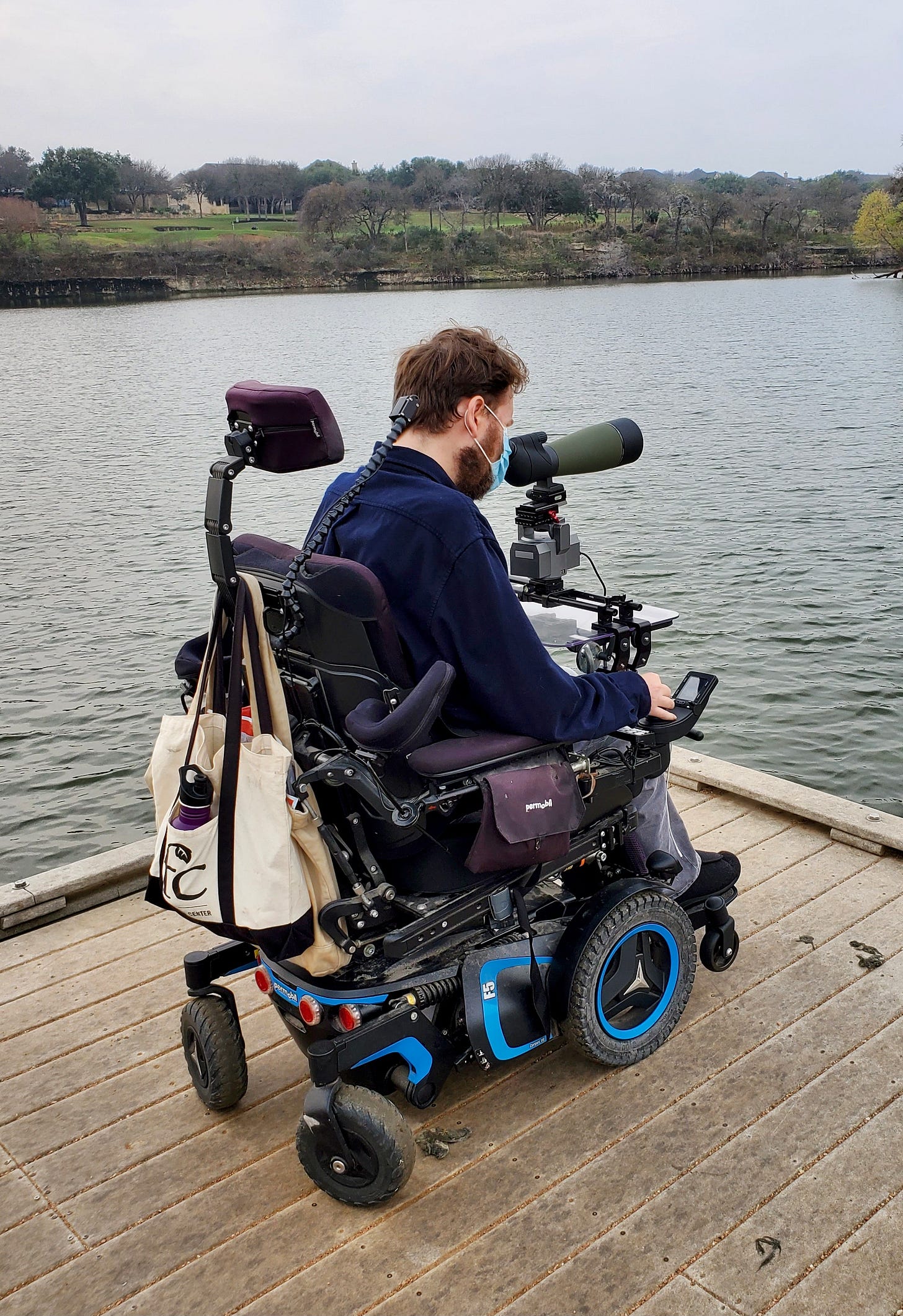
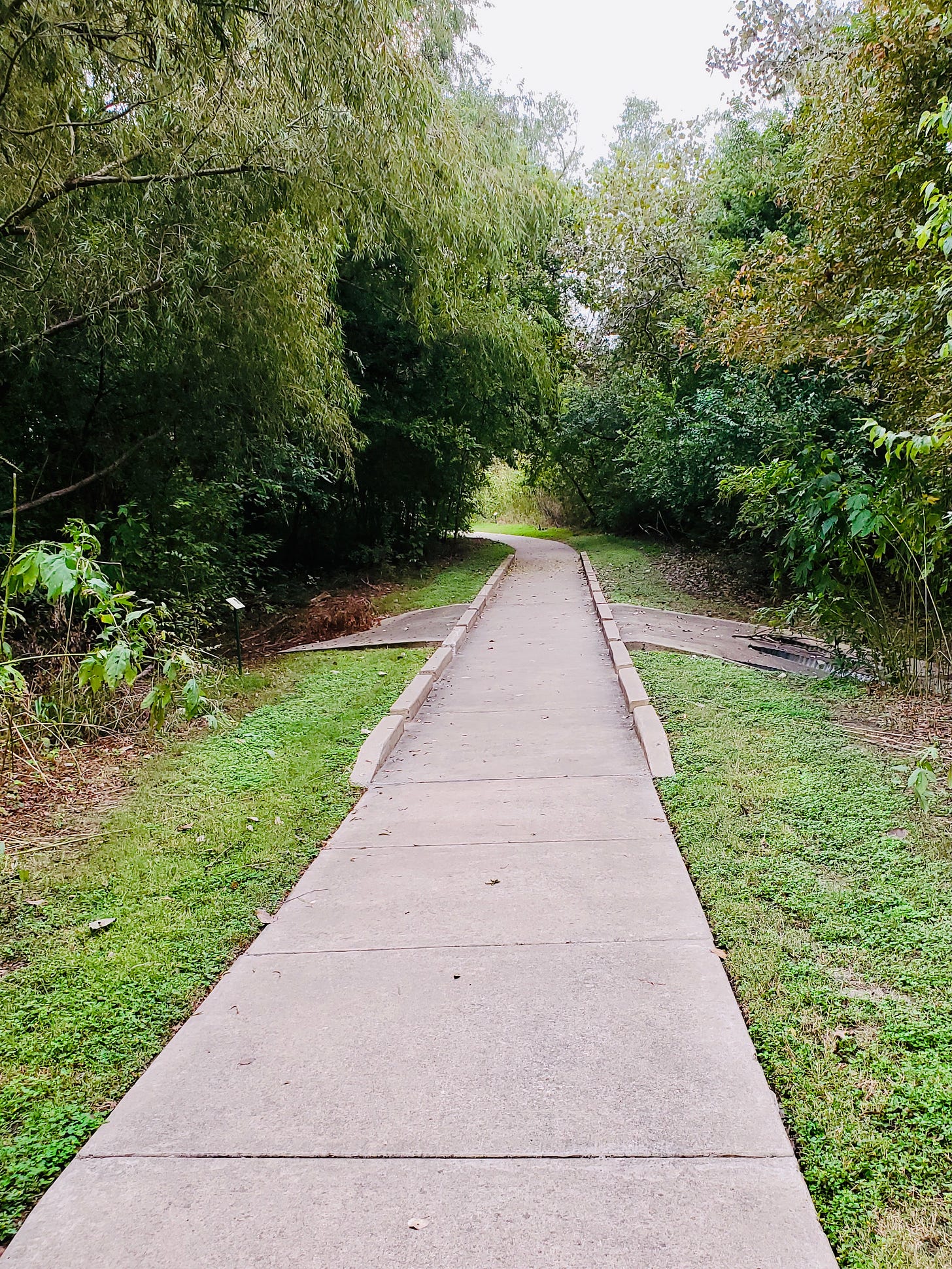

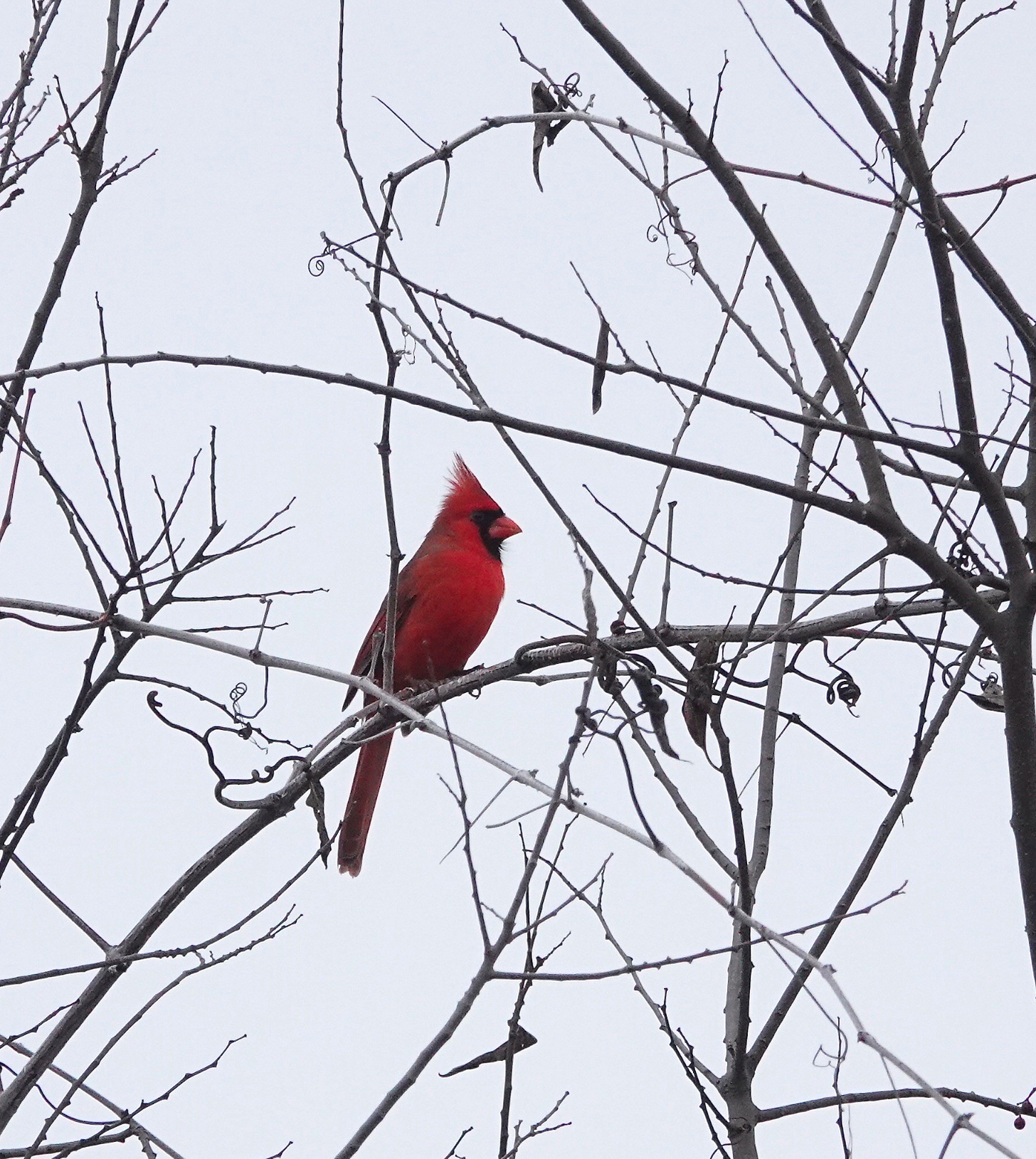
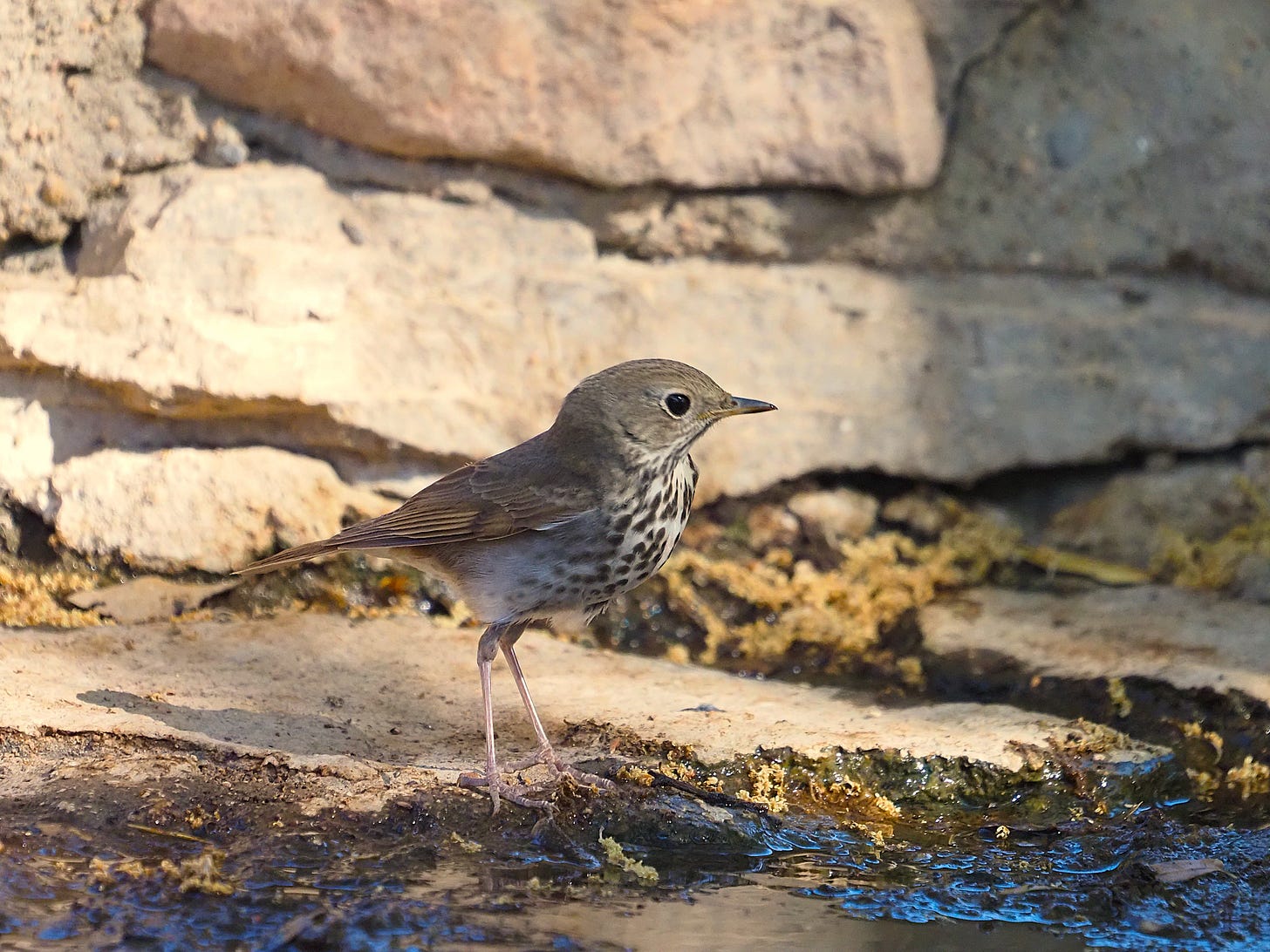
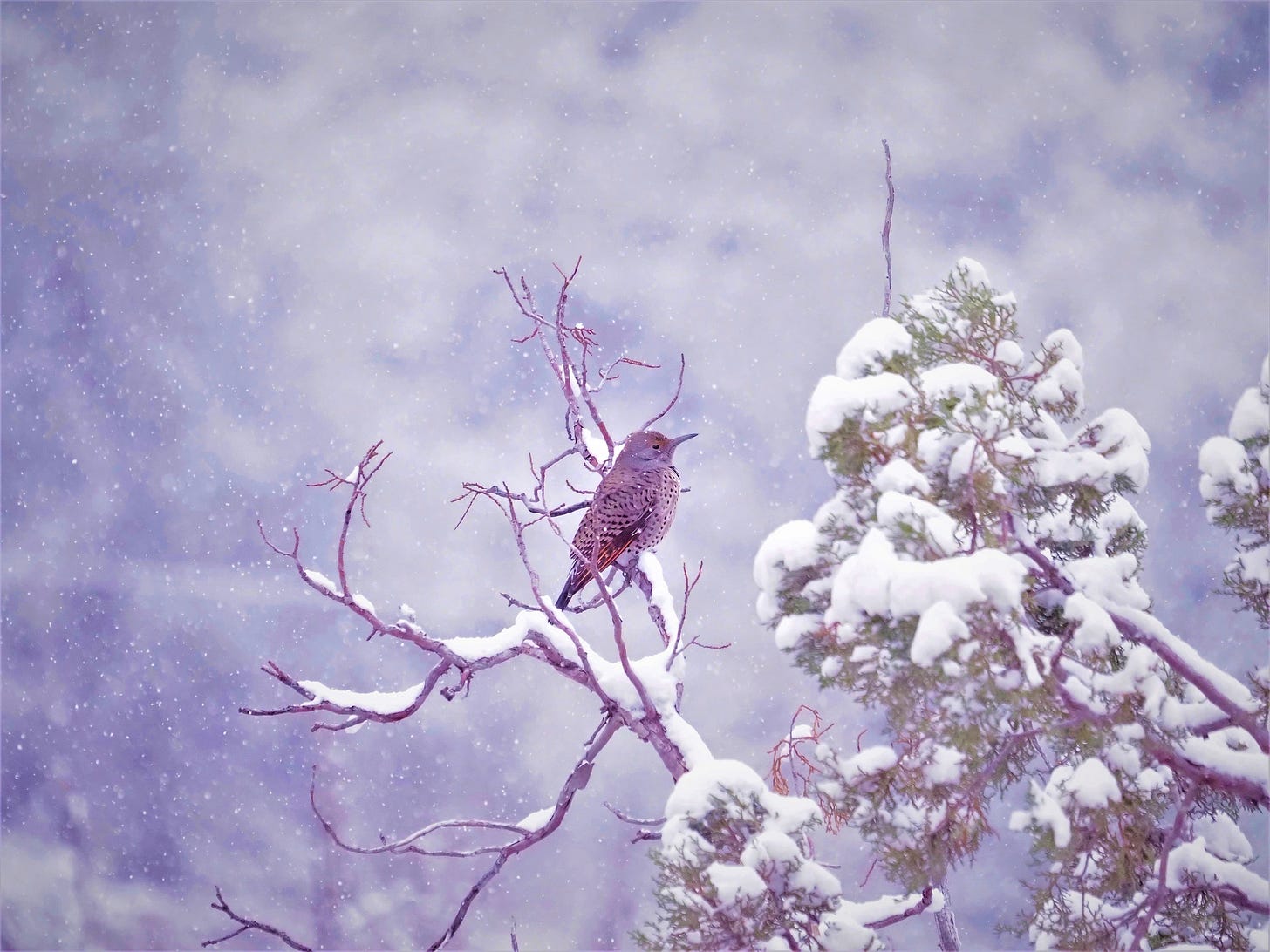
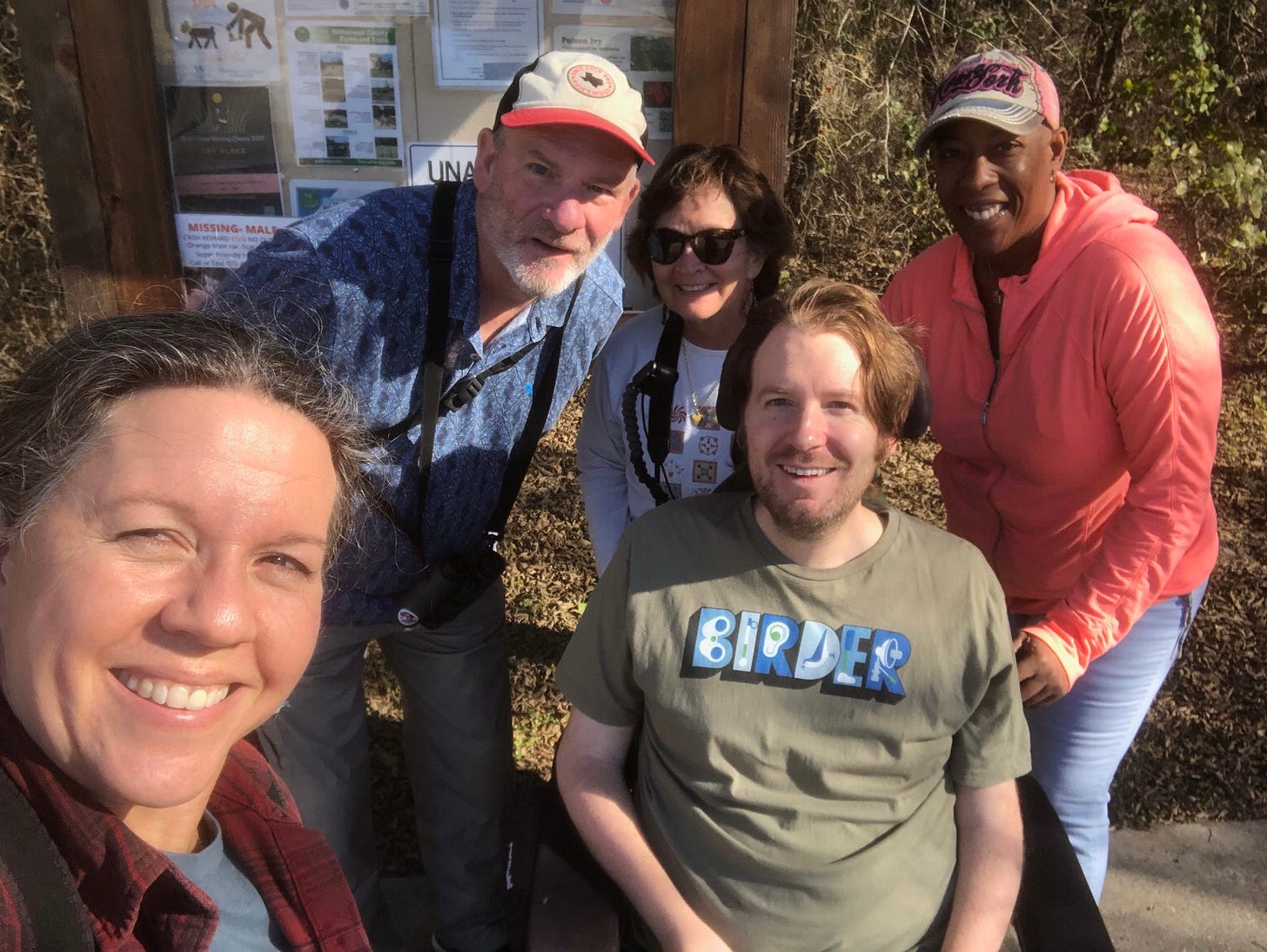
It’s wonderful to “see” all the birds through your newsletter and the photographs. I enjoy the commentary as much as the photos. I cannot get out as much anymore and my eyesight isn’t sharp anymore either. Reading the newsletter gives me the color and depth I lack. I love rereading them as well. I can savor the prose and I can sense how carefully each phrase is chosen.